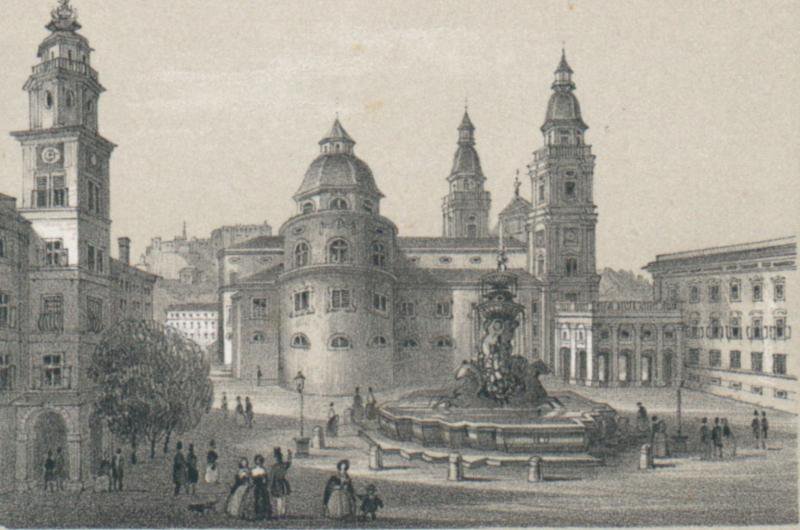Serenade in D major (‘Posthorn’) for two violins, viola, basso, two flutes, two oboes, two bassoons, two horns, two trumpets and timpani, dated 3 August 1779. The nickname derives from the inclusion of posthorn solo in the second trio of the second minuet. The autograph survives in Staatsbibliothek zu Berlin.
The end of the university year in Salzburg, in August, was traditionally marked by performances of orchestral serenades (Finalmusik) normally presented outdoors in one of Salzburg’s main squares; the autograph of K320 is dated 3 August and was almost certainly intended for the university graduation ceremonies. Mozart’s other works composed for the university students include the serenades K185, K203, K204. The cassations K67-K69, the dates of composition and purpose of which are not known, are traditionally assigned to 1769 and, as works similar to serenades, thought possibly to represent Finalmusiken.

Franz Josef Sandmann, The Salzburg Residenzplatz, lithograph c1840 (Vienna, Austrian National Library)
Two movements of K320 – the Concertante and the Rondeau (movements 3 and 4) - feature solos for flutes, oboes and bassoons; Mozart performed the movements independently of the serenade, as a concerted work, at his Burgtheater concert on 23 March 1783. The parts used by Mozart to perform the work — produced partly in Salzburg and partly in Vienna, and with a title page by Leopold Mozart — survive in the Stadt- und Universitätsbibliothek Frankfurt am Main.
- Category/Role
- Serenade
- Author/Creator
- Mozart, Wolfgang Amadeus